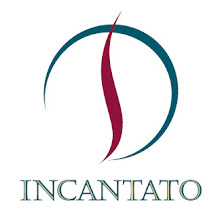
For 500 years, Michelangelo’s “David” has stood as a symbol of Florentine independence and virtue. However, following a recent report commissioned by the federal government shocked native Florentines by suggesting that Italy—not the city of Florence—was the rightful owner. As local tempers flared, Florence’s Mayor Matteo Renzi defended the city’s ties to the famous statue.
“The ‘David’ is not an umbrella to be haggled over. It’s a monument in which the city of Florence still sees its identity,” says Renzi. “The sculpture has always and will always belong to Florence.”
Civic pride aside, the dispute over “David” also raises the question of who benefits from Italy’s cultural patrimony. More than one million people visited the Accademia Gallery in 2009 to see “David,” making it the fourth most visited cultural site in the country. Ticket sales exceeded $7 million with the benefits going to the federal Culture Ministry coffers.
Although the question of ownership and related issues surrounding “David” date back to previous administrations, the turning point culminated in early 2010 when the Culture Ministry commissioned a pair of lawyers to analyze official documents. A nine-page document written in dense legalese concludes that “David” belongs to the nation of Italy, the true legal successor of the Florentine Republic, who commissioned the statue in 1501.
Following its completion in 1504, the statue was immediately hailed as a masterpiece and placed in front of the Palazzo della Signoria, which still remains the civic heart of the city. 16th century Italian painter and architect Giorgio Vasari praised the sculpture by claiming that “whoever has seen this work need not trouble to see any other work executed in sculpture, either now in our own or in other times.” The sculpture remained there until 1873 when it was transferred to the Accademia in the Kingdom of Italy. Following the construction of a base for the massive work in 1877, the city could have advanced ownership rights but, according to the lawyers’ report, did not. Therefore, they say, the city has no grounds for claiming ownership.
The mayor, however, had documents of his own stating that Florence had been the capital of the former Kingdom of Italy from 1865 to 1870, and “David” was part of the package deal that the kingdom offered the city when transferring the capital to Rome. Proof of ownership, he said, is in a document dated June 9, 1871, authorizing the transfer of ownership of several buildings to the city, including the Palazzo Vecchio where the statue stood at that time.
In an additional twist, Italian news outlets also reported that Simone Caffaz, the president of the Fine Arts Academy of Carrara, where the marble used for “David” was quarried, believed that Carrara also had the right to make its own claims on Michelangelo’s work. “If the state and the city actually ever bring this issue to court, it will be terrible publicity for Florence,” fretted Gabriele Toccafondi, a member of Parliament and the local leader of the center-right People of Freedom Party. “People will see this as a sort of commedia all’Italiana.”
On a recent August weekday, dozens of tourists gaped and gawked at “David,” towering in his tribune at the Accademia.
Seeing “David” had definitely been “the highlight of this trip,” said Sorcha O’Keefe, a primary school teacher from Cork, Ireland. But the squabble over “David” made little sense to her. “I can’t see that it would matter who officially owns it, as long as it is there for everyone to enjoy,” she said.
An August 31, 2010 article in the New York Times further discusses the ongoing dispute.
 Dear travelers,
Dear travelers,




































